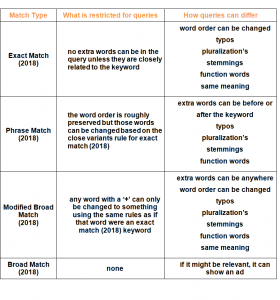— April 3, 2018

When an email campaign succeeds, the upside is obvious; improved engagement and increased revenue. But what’s required to consistently repeat that success is less obvious.
The truth is that email teams are often thrown together. They’re commonly comprised of people whose primary skill-sets aren’t specific to email and they’re given tools frequently designed with email as an afterthought. Or, even worse, tools that were cobbled together through assorted hacks so they kind-of, sort-of work for email.
No wonder so many companies’ email programs underperform.
To change underperforming to high-performing, the first step is prioritizing email. Both transactional and marketing email should be viewed as essential parts of the customer experience. The second step is investing in the right people, processes, and programs.
I have a weakness for alliteration – even when it’s slightly corny. So I like to call these key elements The Three Ps of a High-Performing Email Team.
Let’s take a closer look:
People: It can sometimes feel like ‘email marketers’ are a dime a dozen. But the people you need for a high-performing email team have skills that go beyond marketing. Your team should have expertise in all areas of email production and your program should comprise all customer emails, not just those that originate from the marketing team. I’m talking about a cross-functional team collaborating on a program that puts transactional and promotional emails under a single CX umbrella.
Seek out pros skilled at email strategy, production, and deployment, including copy, design and development. Of course, they should be good marketers, too. Make sure everyone from the copywriter to the person writing the code appreciates the value of email and its impact on CX.
That means treating transactional and promotional email as different but equally vital touchpoints in the customer journey.
Processes: Process improvements are about more than just speeding things up. While doing things faster is good, doing things better is far more important.
A good first step is getting your transactional emails out of your codebase. Find a way to edit/update transactional emails without depending on developers who likely have higher priority tasks.
After that:
- Establish a library of email templates, using modular content elements. That way you’re not constantly starting from scratch. Make sure creating localized versions is part of the standard process.
- Use the time and effort your template library saves to do more extensive A/B and multivariate testing. Test as many elements as you can — one at a time, of course — subject, preheader, body copy, images, CTAs, etc.
- For marketing email, use batch testing, where you send a small test to a subset of your list, then the winning version goes to the rest.
- For transactional, it’s better to use what I call “continuous testing.” That’s where you run multiple rounds of testing on every email, so you’re continuously optimizing.
- Establish KPIs for every email you send. Incorporate performance measurement and data analysis into the process.
- While you’re at it, you might also want to establish a standardized process for documenting each email. Track the email’s purpose, who owns it, when/why it’s sent, and to whom. Include how it gets triggered, what data it relies on, performance, etc.The institutional knowledge you will build over time will be invaluable.
- Take action on your test results. Use them to improve not only open, click, and conversion rates but also to fine tune segmentation and improve customer experience. Then keep testing.
- Establish a central approval process to ensure every email is fully reviewed and tested before deployment. Maintain consistency by formalizing stakeholder sign-off on brand governance, regulatory compliance, and reputation management.
Programs: To ensure your people can properly execute, you need to give them the right tools and technologies.
At a minimum, a high-performing email team will need the following:
- A template editor to edit both copy and HTML. It should include a visual preview and have the ability to incorporate variables to test personalization and dynamic content. Integrate your editor with production and/or your in-house digital messaging service/third-party ESP by API or web hooks.
- A tool to automate integration with customer data for personalization and dynamic content, either pulled from the database (marketing emails) or pushed by an online or in-app event trigger (transactional).
- A testing tool to preview rendering across multiple devices and email clients
- An analytics tool to measure performance
Putting in the time and effort to create a solid email team, with the right processes and programs in place, isn’t easy. But doing so will help deliver significantly improved results, over and over.
Digital & Social Articles on Business 2 Community
(71)
Report Post





